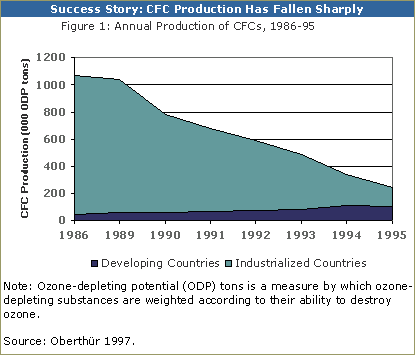The Environmental Defense Fund’s Fred Krupp threw down the gauntlet to carbon taxers in the Wall Street Journal last month:
Environmental taxes have worked well to raise revenue, but without a cap they inevitably become a license to pollute in unlimited amounts. No air pollution problem has ever been solved except by imposing a legal limit on emissions. (emphasis added)
This is a little like the Pope complaining that sex isn’t enough fun: how would he know? Pollution taxes have seldom been tried. But in the few cases where they’ve been tried, they’ve worked rather well.
One example is from the dawn of my own career, in early 1973, when I was a junior economist with the New York City EPA, and the City was almost entirely dependent on fuel oil to generate electricity and heat offices and apartments. A local law requiring a switch to low-sulfur oil had just gone into effect. Swearing that supplies of the cleaner fuel were drying up, the oil companies began jawboning city officials for variances to keep selling the dirtier (and cheaper) fuel.
The city was about to cave, until an EPA lawyer channeled Adam Smith and suggested granting the variances with a condition: that each barrel of dirty oil be “surcharged” at a rate slightly greater than the price premium for the clean fuel. After researching market conditions, the City settled on a surcharge of 75 cents to $2.00 a barrel of higher-sulfur oil, depending on the sulfur content.
Guess what? The Invisible Hand carried the day. With the surcharge canceling the profit from polluting, the oil companies discovered ways to get more clean fuel from their refineries and otherwise re-allocate supplies. For the rest of that year’s heating season, the dirty stuff amounted to a tiny fraction of the total granted in the variances. A simple, market-correcting tax probably saved hundreds from succumbing to emphysema and other pulmonary diseases while keeping the lights on.
Another pollution-tax success story is the global phase-out of chlorofluorocarbons and other ozone-destroying chemicals. While this landmark achievement is often ascribed to the cap-and-trade system built into the 1987 Montreal Protocol, the fact is that emissions barely dropped until a U.S. tax on CFC’s took effect on Jan. 1, 1990.
 The rate of reduction in emissions in 1990, the first year with the tax, was at least five times greater than in the preceding period with the cap alone. While a more aggressive cap might have worked by itself, the fact is that, contrary to Krupp, a pollution tax did the job quite well.
The rate of reduction in emissions in 1990, the first year with the tax, was at least five times greater than in the preceding period with the cap alone. While a more aggressive cap might have worked by itself, the fact is that, contrary to Krupp, a pollution tax did the job quite well.
Krupp’s hostility to pollution taxes represents a retreat from good sense on the part of EDF, which used to be a conspicuous – and prescient – advocate of price incentives. For example, it was EDF that hired economist William Vickrey to testify for social-cost-based pricing in regulatory proceedings on electricity and rail transit in the mid-1970s – 20 years before Bill’s work on peak-load pricing won him the Nobel Prize.
Back then, EDF understood the simple idea that when something becomes more expensive to do, people do less of it. Even granting the group’s allegiance to cap-and-trade, is it really necessary for them to turn up the rhetorical heat against pollution taxes?
True, price internalization isn’t the sole answer to everything, including slashing carbon emissions. Institutional barriers like split incentives and unequal access to capital need to be addressed by complementary policies. Regulatory standards, technology-forcing measures and pollution limits all have a part to play. But without fuel prices that clearly convey the real price of pollution to the purchaser, the transition from fossil fuels won’t happen until most of the carbon still underground has moved into the atmosphere.
On the other hand, if human nature is anything like what it was in Adam Smith’s day, then a phased-in, upward-adjustable and largely revenue-neutral carbon tax, such as proposed last month by Rep. John Larson (D-Conn.), is the best tool for the job.
The market insiders lined up at the cap-and-trade trough will gnash their teeth. But in some celestial think-tank, Mr. Smith will be smiling.


